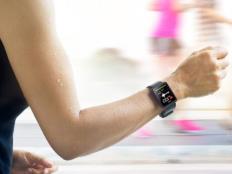
For many runners, the Boston Marathon is a sign of spring. On the third Monday in April, marathoners (and what seems like the entire city of Boston) get ready for a 26.2-mile party. Whether you're running or spectating, this race has some unique quirks you should know about.
- The Boston Marathon is the only major marathon to be held on a weekday! In its early years, the race always took place on April 19 (Patriot's Day). However, in 1969 officials designated the third Monday in April as Patriot's Day, so that's when the race is now held.
- Women weren't allowed to officially run the marathon until 1972 (76 years after the race began!). However, in1967, Katherine Switzer made headlines by becoming the first woman to officially register for and complete the race. She registered under the name K.V. Switzer and officials had no idea she was a woman until race day. Race official Jock Semple was not pleased and tried to pull her off the course. Thankfully, things have changed a lot in the past 50 years and women now make up about 45 percent of the field.
- Nearly all runners know about the infamous Heartbreak Hill that stares down racers around mile 20, but the starting line is actually the highest point on course at 490 feet above sea level. Luckily, the first few miles of the course treat runners to a pretty drastic drop in elevation. All hail the downhill!
- Although the race ends in the city of Boston, much of the course runs through suburban areas. The starting line has changed a bit throughout the race's history—the Boston Marathon now begins in Hopkinton, Massachusetts, but from 1897 until 1923, the race started in nearby Ashland, Massachusetts.
- The race used to begin at noon—something that offered a unique challenge to marathoners. In 2007, the Boston Athletic Association (B.A.A.) moved the first wave start to 10:00 a.m., which is still considerably later than many marathons. When it comes to fueling, bathroom visits and weather, a mid-morning start certainly keeps things interesting!
- Boston Qualifying standards, or "BQs" as they are often called, have changed many times since the race began; 1970 was the first year that qualifying standards were enacted. To keep the field size to 1,000 runners, the B.A.A. required all entrants to submit certification that they could complete the race in under 4:00. In 2012, the registration process changed to "rolling admission," allowing the fastest runners to register first and shutting out some of the slowest runners. Beginning in 2020, standards will once again change—men under age 35 will have to run 3:00 to earn a BQ while women under 35 will need to run under 3:30.
- Monetary awards didn't begin until 1986 (right around the time corporate sponsorships were introduced). Before then, the winner simply received a wreath woven from olive branches.
- In its 122 years, the race has never been cancelled due to weather—although some runners might have wished for it! In recent years, racers have seen everything from a cold and rainy nor'easter (2007) to record-setting heat (2012). However, the weather isn't always a hindrance. In 2011 runners lucked out with a big tailwind!
- And speaking of tailwinds, the International Association of Athletics Federation (IAAF) doesn't consider Boston Marathon performances eligible for world records due in part to its point-to-point course. On years when there's a swift tailwind, it could propel runners to super-fast times, so Boston finishes can be considered "world best" but not "world record."
READ THIS NEXT: The Golden Rules of the Boston Marathon
Get ACTIVE on the Go


Couch to 5K®
The best way to get new runners off the couch and across the finish line of their first 5K.
Available for iOS | Android






Discuss This Article